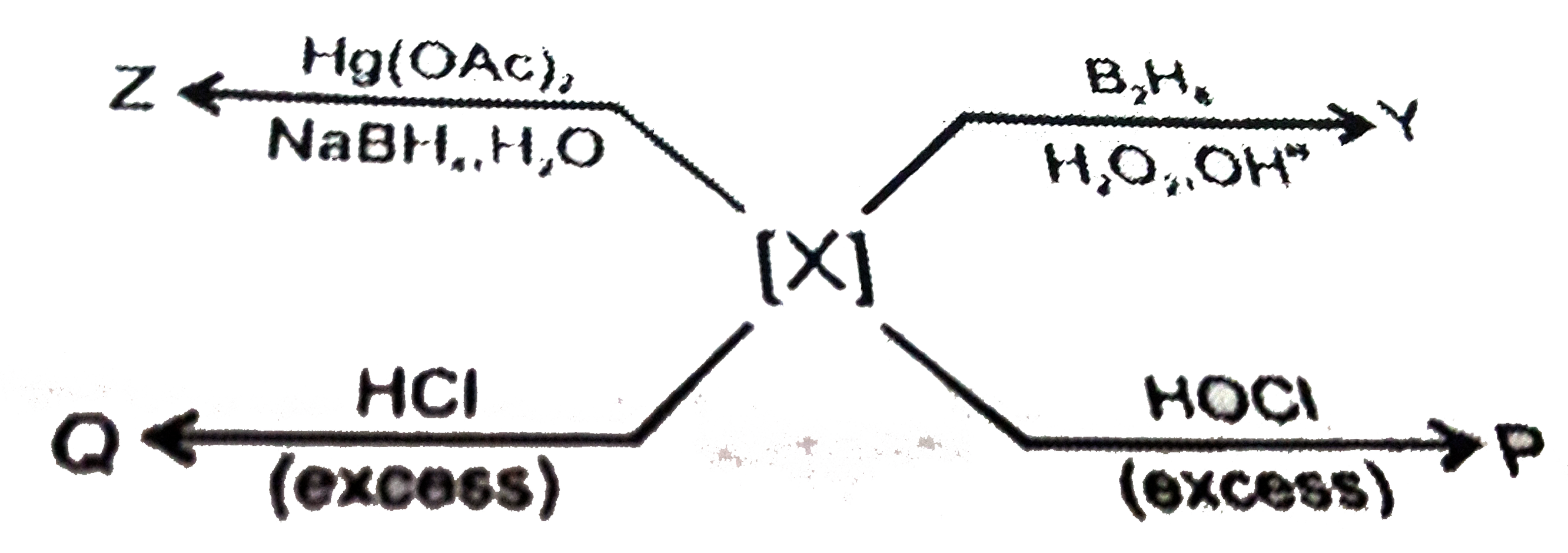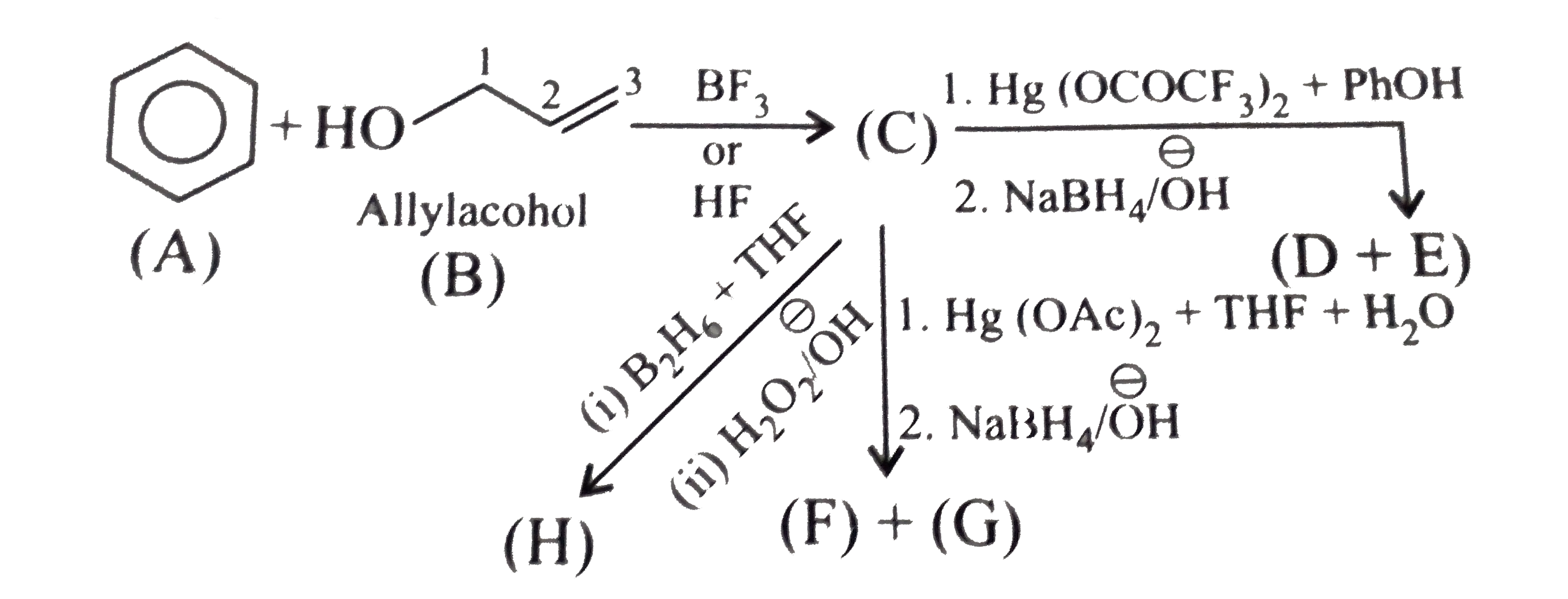Hydroboration reaction.
Step-by-Step Solution for Hydroboration Reaction
Step 1: Understanding Hydroboration Reaction
The hydroboration reaction involves the addition of boron and hydrogen across a double bond in an alkene. This reaction is characterized by the addition of boron (from B2H6) to the less substituted carbon atom of the alkene, following the anti-Markovnikov rule.
Step 2: Reactants and Conditions
The reaction typically involves:
- An alkene (e.g., CH2=CH2)
- Borane (B2H6)
- Tetrahydrofuran (THF) as a solvent
- Hydrogen peroxide (H2O2) in a basic medium for oxidation.
Step 3: Formation of BH3
In the presence of THF, B2H6 undergoes cleavage to form two moles of borane (BH3). The THF stabilizes the BH3 by donating a lone pair to the boron atom.
Step 4: Alkene-Borane Reaction
The alkene approaches the BH3. The double bond of the alkene donates its electrons to the boron atom, forming a three-membered transition state. This results in the addition of boron to the less substituted carbon atom of the alkene.
Step 5: Formation of Alkyl Borane
After the addition, we obtain an alkyl borane (R-CH2-BH2) where the boron atom is now bonded to the less substituted carbon atom of the alkene.
Step 6: Oxidation of Alkyl Borane
Next, we introduce hydrogen peroxide (H2O2) in a basic medium. The base abstracts a hydrogen from H2O2, forming a hydroperoxide ion (HO-O-). This ion reacts with the alkyl borane, replacing the boron atom with a hydroxyl group (OH).
Step 7: Hydrolysis
In the final step, hydrolysis occurs, where the alkyl borane is converted to alcohol. The boron atom, being less electronegative, will bond with hydroxyl groups, leading to the formation of alcohols and boric acid (B(OH)3).
Step 8: Final Product
The final products of the hydroboration reaction are alcohols formed at the less substituted carbon of the alkene, adhering to the anti-Markovnikov rule.
The hydroboration reaction involves the addition of boron and hydrogen across a double bond in an alkene. This reaction is characterized by the addition of boron (from B2H6) to the less substituted carbon atom of the alkene, following the anti-Markovnikov rule.
The reaction typically involves:
- An alkene (e.g., CH2=CH2)
- Borane (B2H6)
- Tetrahydrofuran (THF) as a solvent
- Hydrogen peroxide (H2O2) in a basic medium for oxidation.
In the presence of THF, B2H6 undergoes cleavage to form two moles of borane (BH3). The THF stabilizes the BH3 by donating a lone pair to the boron atom.
The alkene approaches the BH3. The double bond of the alkene donates its electrons to the boron atom, forming a three-membered transition state. This results in the addition of boron to the less substituted carbon atom of the alkene.
After the addition, we obtain an alkyl borane (R-CH2-BH2) where the boron atom is now bonded to the less substituted carbon atom of the alkene.
Next, we introduce hydrogen peroxide (H2O2) in a basic medium. The base abstracts a hydrogen from H2O2, forming a hydroperoxide ion (HO-O-). This ion reacts with the alkyl borane, replacing the boron atom with a hydroxyl group (OH).
In the final step, hydrolysis occurs, where the alkyl borane is converted to alcohol. The boron atom, being less electronegative, will bond with hydroxyl groups, leading to the formation of alcohols and boric acid (B(OH)3).
The final products of the hydroboration reaction are alcohols formed at the less substituted carbon of the alkene, adhering to the anti-Markovnikov rule.
Topper's Solved these Questions
Similar Questions
Hydroboration oxidation and acid hydration will yield the same product in case of:
View SolutionHydroboration oxidation and acid hydration will yield the same
product in case of:
View SolutionA Hydrocarbon X (M.F.C4H6) produces an aldehyde Y through Hydroboration Oxidation and a ketone Z through Oxymercuration Demercuration. Y and Z are functional isomers. X gives P when treated with excess of HOCl and Q when treated with excess of HCl.

The correct statement is :
View SolutionExplain the given reactions with the examples.
(a) Hydrogenation reaction , (b) Oxidation reaction
(c ) Substitution reaction , (d) Saponification reaction
(e) Combustion reaction
View SolutionIso - butylene when subjected to hydroboration oxidation reaction yields
View SolutionName the solvent for B2H6 in hydroboration oxidation reaction.
View SolutionAcid-catalysed hydration oxymercuration-demercu-ration, and hydroboration oxidation reaction will give the same product with:
View Solution
The reaction (C ) to (H) is called hydroboration oxidation of alkene. Which statement is true about the reaction ?
View SolutionWhich gives ketonic group after hydroboration oxidation :
View SolutionWhich of the following is true regarding the hydroboration oxidation of alkene ?
View Solution